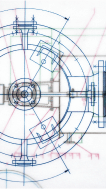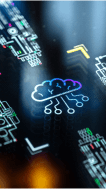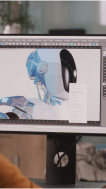DTB’s expert illustrators create high-quality vector and raster graphics tailored to your needs. We develop new drawings or update legacy formats to modern standards, improving clarity and usability. From exploded views to interactive schematics, our detailed, industry-compliant illustrations enhance technical publications and streamline troubleshooting.
DTB takes technical illustration to the next level with smart graphics, dynamic, interactive visuals that enhance user engagement and efficiency in troubleshooting.
Unlike static images, smart graphics respond to user interactions, making complex schematics and wiring diagrams more intuitive. Components can highlight when clicked, and users can trace faults along a signal path, improving diagnostic accuracy. These interactive graphics also support multi-page linking, ensuring circuits remain visible across different sections.
Seamlessly integrating with Interactive Electronic Technical Manuals (IETMs) and web-based platforms, smart graphics provide maintainers and technicians with powerful tools to streamline diagnostics, reduce errors, and improve operational efficiency.
DTB transforms raw engineering data into polished, compliant technical illustrations using Commercial Off-the-Shelf (COTS) software and specialized tools.
Having processed tens of thousands of illustrations for the U.S. government, Foreign Military Sales (FMS), and major DoD prime contractors, DTB is a trusted leader in graphic standardization and compliance.
Using native engineering models, DTB creates precise exploded view diagrams with labeled components and part numbers, ensuring clarity for technicians, engineers, and operators.
By incorporating 3D modeling, we enhance visualization and reduce costs throughout the design and manufacturing process.
From smart schematics to detailed exploded views, DTB provides highly accurate, industry-compliant illustrations that improve technical documentation and streamline operations.

Simplified implementation of S1000D standards, customized to fit your project needs.

Development of precise, detailed, and compliant documentation for any industry.

Creation of high-quality visual aids and schematics to enhance technical content.

Updating older documents to modern formats and specifications for seamless integration.

End-to-end support for Interactive Electronic Technical Manuals (ETM) and parts catalogs.

Advanced support for 3D models and formats to create visually engaging and functional documentation.

Development of tailored training programs to build operational expertise and confidence.

Dayton T. Brown, Inc. 1175 Church St. Bohemia, NY 11716
Dayton T. Brown, Inc. 23967 Prop Way Hollywood, MD 20636